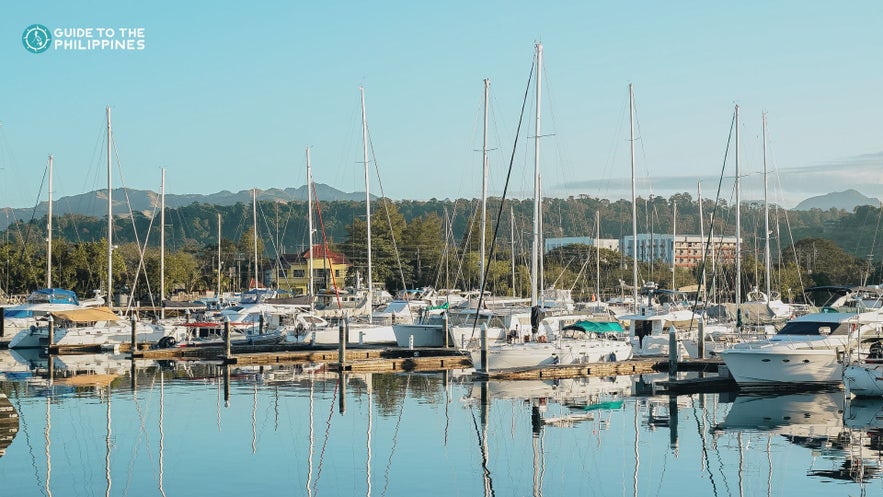
Subic Bay, located along the western coastline of Luzon Region in Zambales Province, has evolved from its past as a strategic naval base into a dynamic destination for leisure, adventure, and family-friendly activities.
Today, it is one of the Philippines’ most versatile travel spots, offering a balance of beaches, marine attractions, forest parks, and modern facilities. With its unique blend of natural beauty and commercial development, Subic Bay provides travelers with a variety of ways to enjoy both relaxation and adventure in one trip.
How to Get There
Subic Bay is conveniently accessible from Manila City, with a drive of about two to three hours via the North Luzon Expressway (NLEX) and the Subic-Clark-Tarlac Expressway (SCTEX). It can also be reached in roughly an hour from Clark International Airport, making it a practical option for both domestic and international visitors.
Travelers arriving by sea can dock at the Subic Bay Freeport Zone, which is home to a cruise terminal that connects passengers directly to the area’s attractions. Local transport options and guided Subic tours make it easy to explore resorts, theme parks, and natural sites around the bay.
What to Expect
Visitors to Subic Bay can expect a wide variety of experiences. Families will find popular attractions such as Ocean Adventure Marine Park, where marine life encounters are the highlight, and Zoobic Safari, which offers close-up views of tigers and other animals. Beach lovers can relax at Camayan Beach Resort or enjoy the vibrant and playful atmosphere at the Inflatable Island Beach Club.
For those seeking more adventure, Subic Bay is known for wreck diving, forest trekking, and even day trips to Mt. Pinatubo. Travelers who prefer a slower pace can enjoy duty-free shopping, a wide selection of dining options, and a comfortable stay at some of the best hotels and resorts in Subic.
Best Time to Visit
The best time to visit Subic Bay is during the dry months from November to May, when the weather is clear, the seas are calm, and outdoor activities are at their most enjoyable. This period is ideal for beach outings, waterpark visits, and diving. While the months from June to October bring occasional rain, they also offer quieter surroundings and the possibility of discounted rates on accommodations, which may appeal to budget-conscious travelers.
Shore Excursions for Cruise Passengers
Subic Bay has established itself as a welcoming port for cruise passengers, and shore excursions make it possible to experience the area’s highlights within a limited timeframe.
Many visitors join an Ocean Adventure Subic shore excursion to watch dolphin and sea lion shows, or head to Zoobic Safari on a cruise excursion for close-up encounters with tigers, crocodiles, and other wildlife. Those who want a more playful beach experience can spend their stop at Inflatable Island, where a colorful floating playground and seaside club atmosphere await.
Some cruise passengers opt for day tours that combine multiple attractions around the Freeport Zone, while others take advantage of Subic’s reputation as a duty-free shopping haven. These options ensure that every cruise stop offers a chance to enjoy Subic Bay’s mix of nature, adventure, and leisure.









